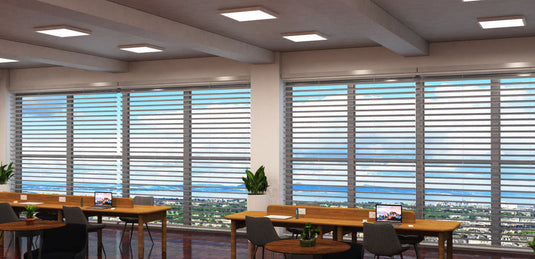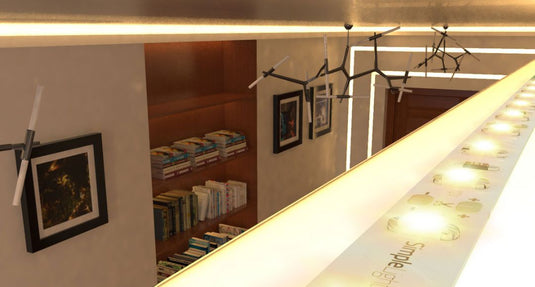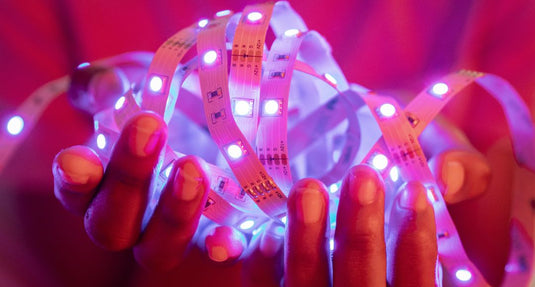Lamp holders or light bulb sockets come in many different shapes, sizes, and materials. It might come as a shock to you, but yes, there's a lot aside from those screw types that are common in most households. It's also one of the reasons why sometimes, the bulbs you buy don't fit the lighting fixtures you have.
So, if you want to make sure that you never waste your money on a bulb that doesn't fit your gorgeous pendant lamps or stylish downlights, here are some of the basic types of lamp holders that you need to know!
4 Types of Lamp Holders
Aside from axial or festoon lamp holder fixtures, there are four main types of lamp holders: screws, pins, wedges, and bayonets. Let's get to know them one by one!
Screw Lamp Holders
Among the four, the Edison screw lamp holder is the most common and easily recognised lamp holder type. It’s used in the majority of homes, commercial spaces and lighting fixtures. Named after the genius inventor Thomas Eddison, these lamp holders have the designation code "E" with a number that signifies the diameter (millimetre) of the light bulb base that it accommodates. So, an E27 lamp holder is made to hold an E27 light bulb.
All kinds of Edison lamp holders are designed with threaded contacts made with metal. However, the housing is a bit varied with a choice of metal, porcelain, or plastic. The porcelain and plastic housing have limited colour options as you can only typically get them in white or black. The metal screw socket, on the other hand, is available in bronze, nickel, brass, with more colour variations depending on the manufacturer.
The aesthetics of your home may influence your choice of lamp holder material. But the plastic ones may not be able to take hotter temperatures of other light sources.

Pin Lamp Holders
Pin lamp holders are intended to pair with linear fluorescent tubes, HID lamps, plug-in CFL lamps, MR16s, some mini-indicator lamps, and the LED version of those fittings. The bulb for this lamp holder would often have two to four pins sticking out from the bottom, connecting the electric current from the power source to the light bulb.
The designation code for pin lamp holders starts with a letter, different for each base type but often represented with a “G” and a number signifying the distance between the two pins in millimetres. The same principle with the screw lamp holder applies, a GU10 bulb is made to fit a GU10 lamp holder. For LED tube light and linear fluorescents, they are attached to their tombstone lamp holders then rotated into place.
Bayonet Lamp Holders
Bayonet bulbs are typically all the same size at the base. These lamp holders are named after the bayonets that are used in rifles since they have the same connection method. The bulbs paired with bayonet lamp holders are pushed in then slightly turned to lock into place. Bayonet bulb bases have a pin on either side, while a bayonet lamp holder comes with two corresponding L-shaped holes and a small spring to have the two locked together.
The locking mechanism of this lamp holder makes it an excellent choice for applications where vibrations may unscrew the Edison bulb. Bayonet lamp holders have one or two contact points at the bottom, depending on the bayonet bulb base that you'll use.
Also, they have the designation code “BA” followed by a number representing the diameter (millimetres) of the base then a lower case “s” or “d” to indicate whether it’s a single or double contact.
Wedge Lamp Holder
Wedge lamp holders are incredibly diverse because they don't have pins or a metal cap, unlike traditional lamp holders and bases. As a substitute, the bulb's glass tapers down to a point to cover it. The two wires extending from the bottom of the base acts as contact points (where the current pass to power the bulb).
Different types of bulb bases
Now that you know the different types of holders, you'll be less likely to make a mistake if you also know the various types of bulb bases as well. There are six base types including, screw base, twist and lock base, speciality base, bi-pin base, fluorescent pin base, and compact fluorescent lamp plug-in bases. Although there are six categories, the most common ones you probably have at home are screw bases and pin bases.
Each base works differently since the technology they use to connect the light bulb to the electrical voltage functions in a unique way.
Screw Bases
Screw bulb bases or Edison base light bulbs are a staple to almost every home on the planet. They come in various sizes, which is indicated after the letter E (e.g., E27, E14, etc.). Like the screw lamp holders, the number is the measurement of the bulb's diameter in millimetres. If you’re going to buy one, check the packaging since everything you need to know is indicated there.
Pin Bases
Pin bases are usually seen in linear fluorescent tubes, plug-in CFL lamps, MR16s, and LEDs. Contrary to screw bases that connect the bulb with the voltage by using two contact wires, light bulbs with pin bases connect the lamp with the voltage using the two pins that are sticking out. The most common pin base bulb you might have in your home is a GU10 lamp.

There you have it! Now that you know what holder goes with a specific bulb, it's not likely to happen that you'll get a mismatch. So, if you ever need a premium-quality LED bulbs, visit our website, LED Supplier. We have a broad collection of fittings, including downlights, strip lights, bathroom lights, and more!




